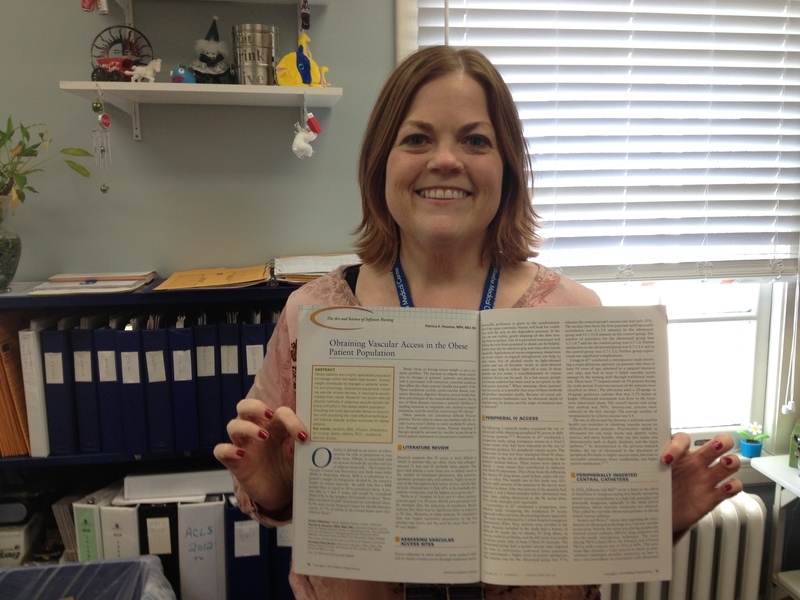While obesity may cause someone to have trouble climbing stairs or fitting into the latest fashions, the most serious problems it causes are the associated health risks and the challenges the medical community faces when offering treatment.
For example, when patients have excess weight in their upper arms, physicians and nurses in many cases have to utilize special equipment and techniques to insert an IV.
Patricia A. Houston, RN, MPH, MEd, coordinator of the Bariatric Program at Beebe Medical Center, has published a professional article in the January/February 2013 issue of the peer-reviewed Journal of Infusion Nursing on this aspect of care of the obese patient. Her article, Obtaining Vascular Access in the Obese Patient Population, compiles the research that has been done on safe and effective techniques when using IVs on obese patients.
“We chose Patty’s article for publication because of its timeliness and unique focus,” said Mary Alexander, MA, RN, CRNI, CAE, FAAN, editor-in-chief of the Journal of Infusion Nursing. “Not only does this article address a real need for information for our readers, but Patty’s research is also significant as we add to the science of the infusion nursing specialty.”
Houston, a registered nurse with master's degrees in education and public health, became interested in the subject in 2010 after taking over the coordinator’s role for Beebe’s Bariatric Program, which offers a comprehensive approach to weight loss that includes surgery, nutrition counseling, support groups and exercise.
Beebe Medical Center’s Bariatric Program has been designated a Bariatric Surgery Center of Excellence by the American Society of Metabolic and Bariatric Surgery. Houston is an associate member of the organization.
"When I started doing research, I couldn’t find comprehensive information on obtaining IV access for our patient population,” she said. “Instead, each journal article I found dealt with a single aspect of IV insertion. I decided to put all pertinent research into one article so infusion staff at any hospital can use it as a guideline to improve practice.”
The several techniques Houston discusses in her article include using ultrasound to find the vein, using longer IV devices, angling the needle differently and measuring the arm to allow for the extra tissue in cases of obtaining peripherally inserted central lines.
“Research shows that using these specialized techniques leads to fewer needle sticks, faster time starting the IV, a reduced risk of infection, and improved patient satisfaction,” she said, pointing out that anesthesiologists and vascular access team members already use these techniques at Beebe. For example, anesthesiologists can bring a portable ultrasound machine to the patient’s bedside when inserting an IV.
Houston presented her research in November 2011 at the Infusion Nurses Society’s National Academy of Infusion Therapy in Los Angeles, Calif.
“Speaking to nurses from all over the country about bariatric surgery patients was a delightful experience,” Houston said. “They came with vast experiences from small community hospitals to large teaching facilities. I feel very proud to have the privilege of being able to represent Beebe Medical Center on the national level.”
Paul Minnick, RN, MSN, NEA-BC, executive vice president and chief operating officer of Beebe Medical Center, said that Houston’s research reflects her commitment to patient safety and to quality care.
“I applaud Patty for her commitment to patient safety and to advanced education,” Minnick said. “Patient safety is our No. 1 goal at Beebe Medical Center, and it is critical that our staff members stay up to date with the latest nursing practices.”
For more information about Beebe Medical Center, go to www.beebemed.org.






















































